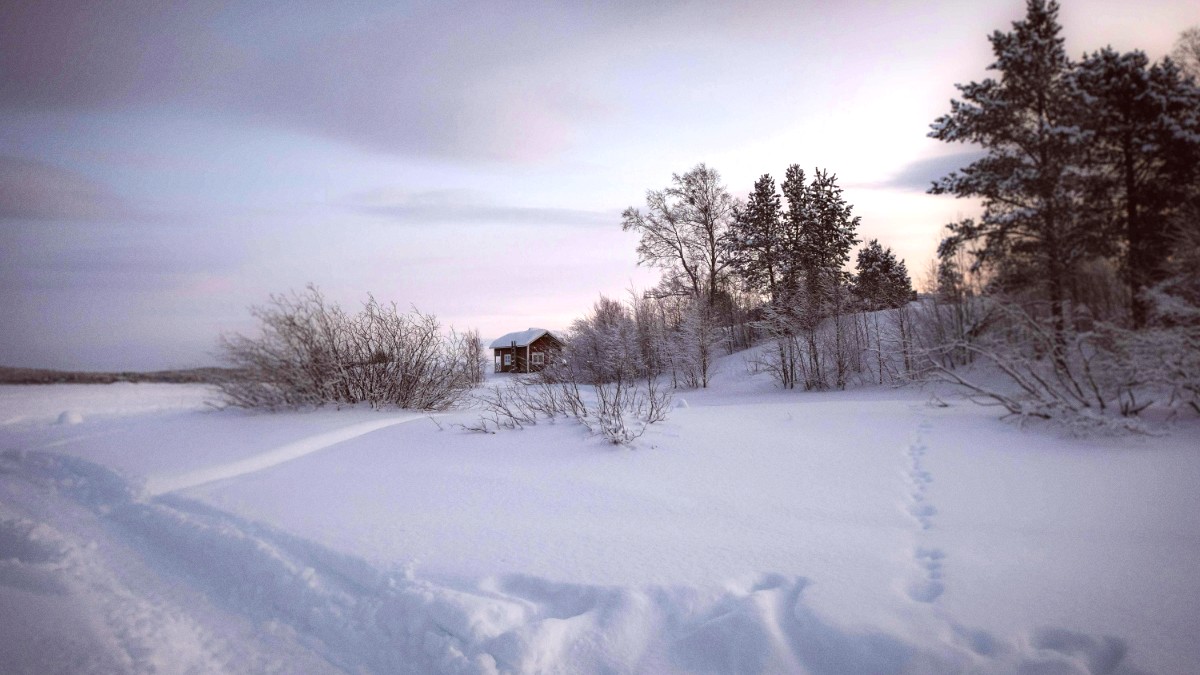
Lapland, Finland
Nestled by Lake Inari, Finland's third-largest lake, the village serves as the heart of Sámi culture in Finland. Visitors find a blend of outdoor adventures, cultural immersion, and peaceful natural beauty.
Winter (Dec-Mar): Best for Northern Lights, snowmobiling, husky safaris. Temperatures are very cold, daylight short, prices high.
Summer (Jul-Aug): Midnight Sun, ideal for hiking, fishing, boating. Temperatures are mild, but mosquitoes can appear. No Northern Lights.
Autumn (Sep-Nov): Good chance to view Northern Lights in September and October. The "Ruska" autumn foliage presents vivid colors. Fewer tourists appear compared to winter. Weather is changeable, can be cold and wet. Some activities wait for snow cover. Daylight shortens by November.
Late spring (May) and early November present lower prices and minimal crowds. Some attractions or tour operators might have limited services or be closed during these times.
Early December to early January, sun stays below horizon. Twilight conditions, soft blues and purples in the sky.
Late May to late July, sun stays above the horizon for 24 hours. Can influence sleep patterns.
Temperatures drop significantly. Proper layering and protective gear are important to avoid frostbite.
Summer brings mosquitoes and biting insects, especially near water. Insect repellent is a good idea.
For Midnight Sun, an Eye mask aids sleep.
Plan your visit around experiences for the best conditions.
Late August to April presents the best viewing opportunities. Clear, dark nights are necessary. Periods around the equinoxes (September and March) are often prime due to increased solar activity.
December to April provides reliable, deep snow cover for snowmobiling, husky and reindeer safaris, and cross-country skiing.
Hiking and canoeing or kayaking are good from June to September. Ice fishing takes place in winter (January-April); open water fishing is possible in summer (June-September).
Finland belongs to the Schengen Area, streamlining travel for many nationalities. Check your specific country's requirements before travel.
Schengen Visa: Non-EU/EEA/Swiss citizens need a Schengen Visa for stays up to 90 days within any 180-day period. This covers tourism, business, or family visits. Apply via the Finnish embassy or consulate in your country. Visa-Free Entry: Citizens from many countries (e.g., USA, Canada, Australia, Japan) enter visa-free for up to 90 days.
Passport valid for at least three months beyond departure from Schengen, with two blank pages.
Hotel bookings, rental agreements, or an invitation from a host.
Bank statements or credit card statements showing adequate money for your stay and return.
Finland has no general entry fees. Upon arrival, present your passport and visa (if needed). Border guards might ask about your visit's purpose and stay duration. Fishing in most waters needs a permit from Eraluvat.fi or local R-Kioski stores.
Hostel bed, self-catering, public buses, free outdoor activities. Daily cost up to €120.
Mid-range hotel, mix of casual dining and self-catering, rental car, one or two organized tours. Daily cost up to €300.
High-end hotels, fine dining, private transfers, multiple premium tours. Daily cost exceeds €400.
Tipping is not customary or expected in Finland. Service charges are always included in the bill. Rounding up is optional.
Many accommodations in Inari feature kitchen facilities. Purchase groceries from a local supermarket.
For winter high season, book flights, accommodation, and popular tours well in advance. This secures better prices and availability.